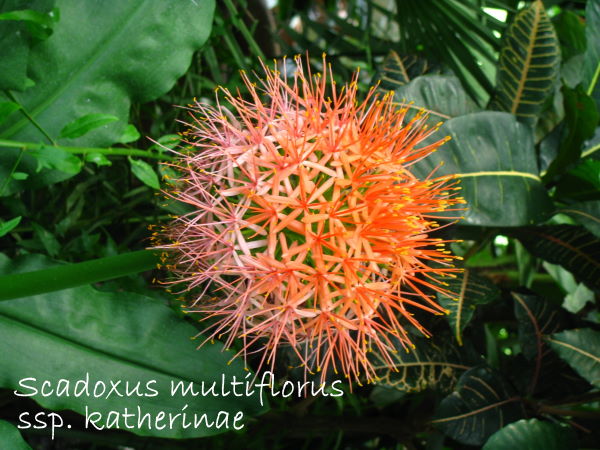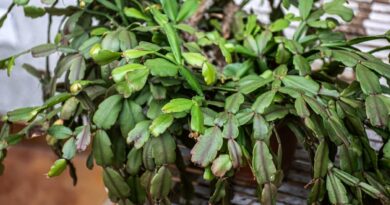Blood Lily is a Cinch to Grow as a Houseplant
Botanical Name: Scadoxus multiflorus
Blood Lily has spectacular spherical blooms made up of fiery, star-shaped florets — each punctuated with golden-tipped stamens.
Out of dozens of species, S. multiflorus ssp. katherinae is the most popular for growing indoors. It’s easy to see why, isn’t it?
 You can see where this flowering tropical plant gets its other common name, Fireball.
You can see where this flowering tropical plant gets its other common name, Fireball.Step by Step: How to Grow a Blood Lily Bulb
This South African relative of the Amaryllis also grows from bulbs. Blood Lily is warm-natured like its cousin and will begin to grow as soon as it is potted. You can start it any time of year, as long as you can provide enough sunlight for it.
Here are the steps:
- Pot bulb in a 6- to 8-inch (15-20 cm) pot, using all-purpose houseplant potting mix. Leave the tip of the bulb above the soil line.
- Water just enough to lightly moisten the potting medium. Once you see new growth, increase watering to keep the medium evenly moist.
- Feed every 2 weeks (see “Fertilizer” below).
Be patient — it takes several months from the time the bulb is planted until you see Blood Lily bloom. It is so worth the wait.
What to Do After Flowering is Over
After blooms are spent, stop watering and allow the flower stems and leaves to die down naturally.
Scadoxus multiflorus is a perennial and can be grown a few times before it begins to deteriorate in quality.
Allow the bulb to rest at least 6 months before starting it again. Repot the bulb in fresh potting mix then follow the steps above.
Scadoxus multiflorus Buying Tips
This tropical beauty has the unfortunate name Blood Lily, but is also known as Fireball Lily for its bright red, orange-red or salmon-red flowers.
The variety shown here has the correct botanical name of Scadoxus multiflorus ssp. katherinae. Formerly known as Haemanthus multiflorus or Haemanthus katherinae, it is still sometimes sold under that name.
Blood Lily Care Tips
Origin: Tropical South Africa
Height: 12-24 in (30-60 cm). Those large flower heads can get heavy; use support stakes to hold up tall stems, if necessary.
Light: Bright light to full sun during growing season. Turn pot occasionally so that all sides are exposed to light for even growth.
Water: Keep potting mix evenly moist, but not soggy, during growing season.
Humidity: This tropical native will tolerate average room humidity (around 40% relative humidity). Air can get extremely dry indoors and need a boost. The most efficient way to raise the humidity around your tropical plants is with a cool-mist room humidifier.
Temperature: Average room temperatures 65-75°F/18-24°C suit this South African native. It will tolerate a minimum of 50°F/10°C. Keep your plant away from drafts from heating vents and cold blasts from doors and windows.
Soil: Good-quality potting mix
Fertilizer: Feed every 2 weeks while Blood Lily is growing. Use high-phosphorus water-soluble fertilizer such as 15-30-15 NPK, mixed at half-strength.
Propagation: Offsets may grow around the bulb. Leave them attached for 2 seasons before breaking them off and planting them in their own pots.




